The average person may come in contact with about 100 chemicals just getting ready in the morning. MANY ARE TOXIC! Find out about these toxic, bad ingredients in skin care products: what are they?, why are they toxic?, what does the FDA do?, what health issues do they cause?, history, and scientific studies.
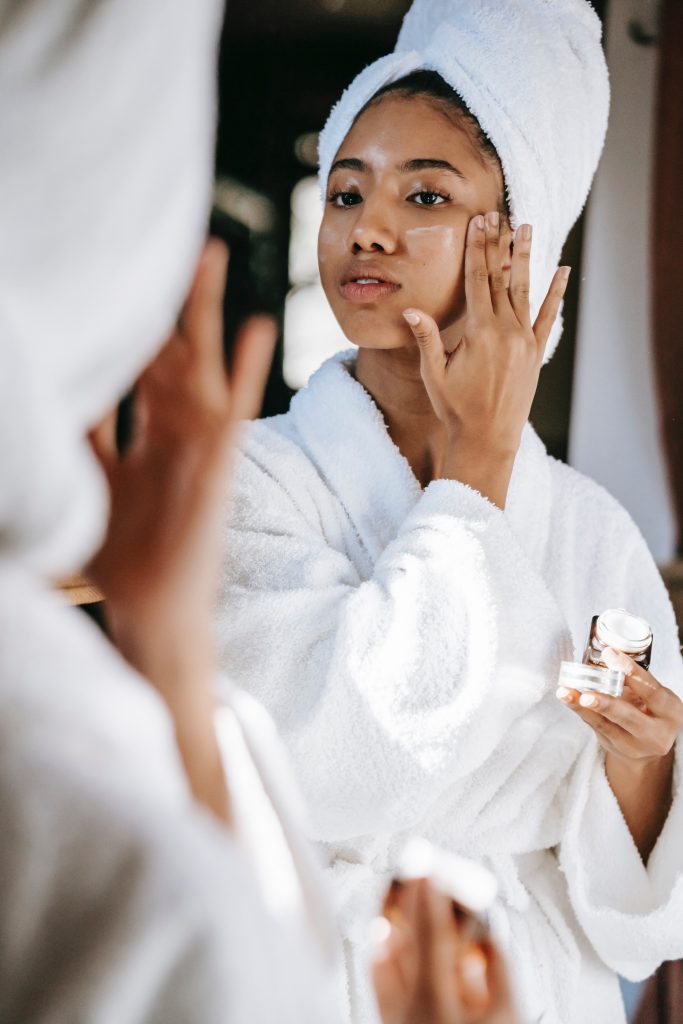 Just a Reminder: Blog does contain Affiliate links. If you buy something, I’ll possibly make a small commission from it, but at no additional cost to you.
Just a Reminder: Blog does contain Affiliate links. If you buy something, I’ll possibly make a small commission from it, but at no additional cost to you.
These chemicals do not come without consequences. You might not see those consequences today or tomorrow, but many of these chemicals remain in the body long-term wreaking havoc. Slowly over time as they build up you are looking at some problematic health conditions. Health problems include cancer, compromised neurodevelopment in children, reproductive problems, asthma, autism, and other health issues.
I have met in-person with easily over 20 different functional (natural) medicine practitioners that all have the same knowledge and general feeling about toxins in body care products. They all avoid them, and talk about how damaging they are to EVERYONE’s health.
Before I get into a lot of facts, research, and studies, let me start by sharing why I’ve chosen to focus on toxins in body care products as my first post on toxic exposures.
My Experience & My Husband’s – Seeing the Difference Between Chemical Body Products & Natural Ones
It has been approximately 5+ years since I’ve switched out every single body, personal care product I’ve owned. I switched to more natural/organic ingredients. Through research, I started slowly realizing there were dangerous toxins in soap, shampoo, etc. Eventually, I ended up replacing all my makeup products. I’m sharing this because I noticed a difference!
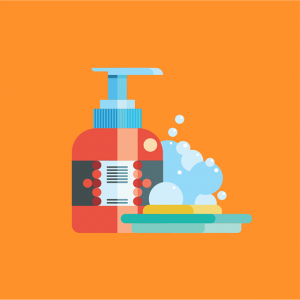 Once I switched there was no going back. After I switched, I had some sample face wash I received from somewhere. I tried it on my face one night and found my whole face burning. It wasn’t the only incident. To show that wasn’t just a fluke incident with me, my husband after a year of more natural products tried some shaving cream (he used to use regularly). His face wasn’t just irritated, he actually had a burning sensation and even got a rash. Yes, that’s what happens when you make the change to more natural products. You realize your body had become immune for years to some nasty chemicals, toxic stuff.
Once I switched there was no going back. After I switched, I had some sample face wash I received from somewhere. I tried it on my face one night and found my whole face burning. It wasn’t the only incident. To show that wasn’t just a fluke incident with me, my husband after a year of more natural products tried some shaving cream (he used to use regularly). His face wasn’t just irritated, he actually had a burning sensation and even got a rash. Yes, that’s what happens when you make the change to more natural products. You realize your body had become immune for years to some nasty chemicals, toxic stuff.
Ever used one of those highly commercialized acne products? They normalize the fact that too much of the product can cause burning and extremely dry skin. Many of us think of that as okay. I mean I had really bad acne in high school and I would try anything. So yeah, I tried a couple. But the real answer to acne is not in the products you buy. It is actually what you are eating. Second to that, is not using products packed with toxic chemicals.
Where Are They? & What Are These Toxic Bad Ingredients in Skin Care?
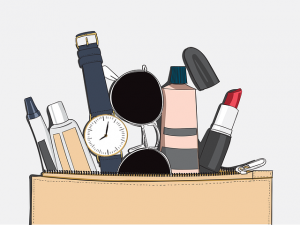
Toxic Skin Care Products
There are toxins in everyday products (not just random brands, popular toxins are found in most brands, and most definitely highly commercialized brands): lotions, body soaps, hand soaps, face wash, shampoo, conditioner, shaving cream, deodorant, toothpaste, hair gel, hair spray, perfumes, chapstick, makeup, and the list goes on…
Toxins in Skin Care Products
Some of the bad ingredients in skin care & beauty products are:
Parabens, Triclosan, Formaldehyde, Contaminated Talc, BHA and BHT, Coal Tar Dyes, DEA-related ingredients, Dibutyl phthalate, Quaternium, Perfume, PEG compounds, Petrolatum, Paraformaldehyde, Methylene Glycol, Siloxanes, Toluene, Oxybenzone, and Mercury.
Why Do We Hold Onto Toxins?
Most toxins are fat soluble and end up stored in fatty tissues in our bodies like our brains, nerves, glands and yes, that extra layer around our tummies and thighs (Sandison). Our bodies hold onto toxins. Yes, some are flushed out because the body tries real hard to reach a homeostasis state. But the body is overburdened. Plus, toxins actually make the detox process harder.
Health Issues Caused by These Chemicals
One of the worst cancer causing ingredients is parabens. The FDA has acknowledged several studies that claim parabens can cause breast and skin cancer and decreased sperm count (health one family medicine). Parabens have also been known to disrupt hormones and lead to reproductive issues. Note: I found parabens in a ton of my everyday regular products I put on my skin.
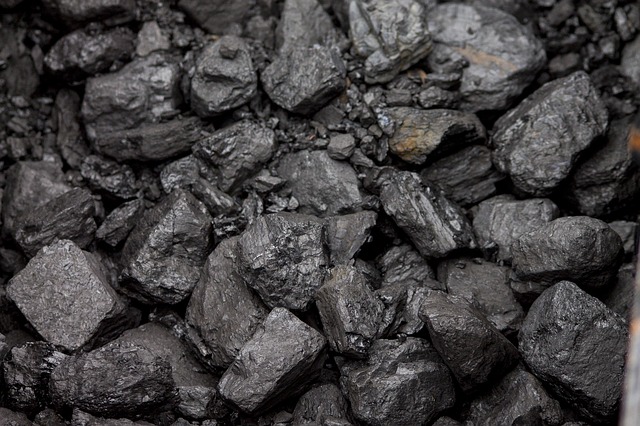 PFAS have been linked to cancer. M- and o-phenylenediamine can irritate skin, damage DNA, and even cause cancer. It is often found in hair dyes. Triclosan can damage thyroid hormones and cause germs to grow from what the FDA says. It is often found in cosmetics, body washes, soaps, and toothpaste. Coal tar is, as it sounds, from coal processing. It is well known to be a carcinogen causing cancer back in the day for young chimney sweeps. However, it is still found in shampoos, skin products, and hair dyes. It can cause cancer, lung, kidney, digestive tract issues, skin tumors, bladder issues, or even reproductive problems. Those are just some of the major toxins.
PFAS have been linked to cancer. M- and o-phenylenediamine can irritate skin, damage DNA, and even cause cancer. It is often found in hair dyes. Triclosan can damage thyroid hormones and cause germs to grow from what the FDA says. It is often found in cosmetics, body washes, soaps, and toothpaste. Coal tar is, as it sounds, from coal processing. It is well known to be a carcinogen causing cancer back in the day for young chimney sweeps. However, it is still found in shampoos, skin products, and hair dyes. It can cause cancer, lung, kidney, digestive tract issues, skin tumors, bladder issues, or even reproductive problems. Those are just some of the major toxins.
Asthma, autism, attention deficit and hyperactivity disorders (ADD and ADHD), childhood brain cancer and acute lymphocytic leukemia have all increased over the past 30 years (EWG). Then, 5-10% of couples are infertile, half of pregnancies end in miscarriage, and 3-5% of babies are are born with birth defects (EWG). Scientists are unsure, but toxins could be the cause of these increases.
This is a difficult thing to digest. I mean how could our government let these products line our shelves if they are not safe? It is easy to think these commercially advertised products (shampoos, lotions, soaps, face washes, shaving creams) are in fact safe. We have been using them forever, right? Well, the government really isn’t doing much. Sorry.
FDA Does NOT Regulate or Test the Safety of New Products on the Market
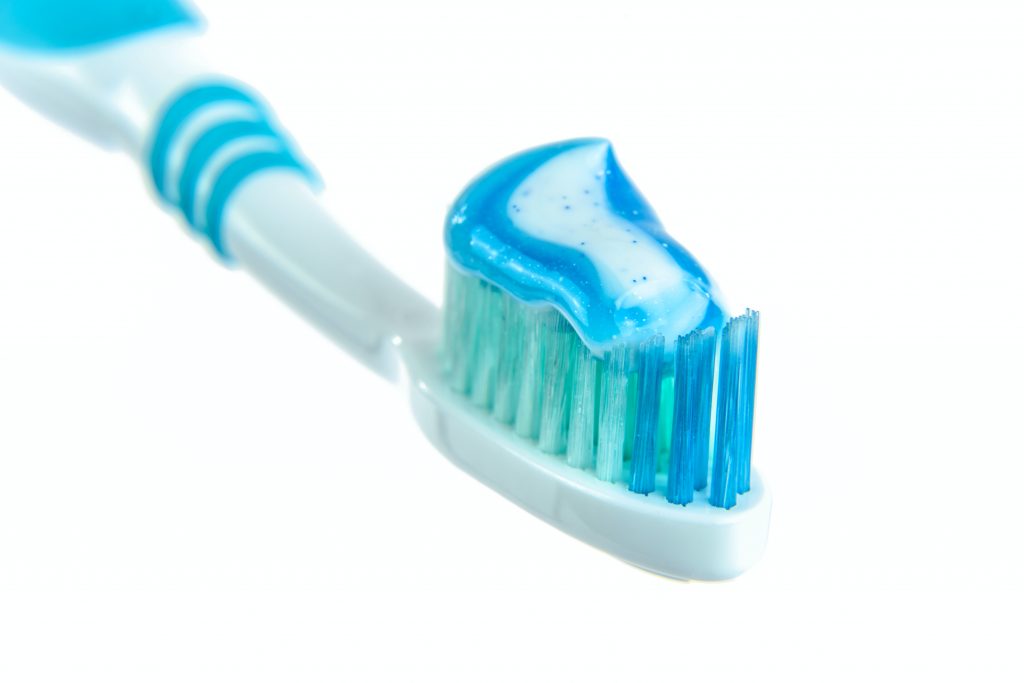
NO FDA SAFETY APPROVAL for New Ingredients (except color additives)!
From the FDA website:
Under the law, cosmetic products and ingredients do not need FDA premarket approval, with the exception of color additives (FDA). Neither the law nor FDA regulations require specific tests to demonstrate the safety of individual products or ingredients (FDA).
There is no requirement for companies to release whatever safety data they may collect. Therefore, you are relying solely on companies driven by profits to provide you with safe products. Unfortunately, many company’s make false claims about their products being natural and safe, and often hide extra ingredients under general terms like (fragrance). Many studies show that a lot of products are anything but safe.
In fact, the U.S. has only banned 11 chemicals, or groups of chemicals, for use in cosmetic products (Lang, 2021). However, the Europeon Union has banned approximately 1,300 chemicals.
If you have been reading my blog for awhile, this shouldn’t be too surprising. I have mentioned a few other things the government is not doing much for such as supplements, allowing lots of toxic chemicals in foods, allowing GMOs, and more.
HISTORY – When did this become so hazardous?
The truth is there has been toxic ingredients in beauty and clean body care products for centuries. They have been harming us for a long time! That is actually part of the problem. Toxins don’t just die with most people. Instead, they are passed down from one generation to the next. Each generation is born with more toxins in their body than prior generations.
 Babies today are born with over 200 -300 toxins in their bodies. EWG did a study on this. Of the 287 chemicals we detected in umbilical cord blood, we know that 180 cause cancer in humans or animals, 217 are toxic to the brain and nervous system, and 208 cause birth defects or abnormal development in animal tests (EWG). Scarier yet, this test was only industrial chemicals and pollutants. There is still a bunch of other toxins they did not test for.
Babies today are born with over 200 -300 toxins in their bodies. EWG did a study on this. Of the 287 chemicals we detected in umbilical cord blood, we know that 180 cause cancer in humans or animals, 217 are toxic to the brain and nervous system, and 208 cause birth defects or abnormal development in animal tests (EWG). Scarier yet, this test was only industrial chemicals and pollutants. There is still a bunch of other toxins they did not test for.
This has been a problem for a long time! A study published in Science talks about how the Ancient Egyptians used lead salts in their eye makeup. We know for a fact this can cause lead poisoning from prolonged exposure. The WHO points out that lead exposure can cause serious health issues, like brain damage and attacks on the central nervous system (Lang, 2021). Americans also consumed arsenic wafers in the late 19th century. It was said to help with several skin conditions. Too much arsenic can cause cancer, diabetes, cognitive problems, and of course death.
These are not the only stories of people utilizing toxic ingredients because of the promises of better skin or beauty. We might not run into arsenic and lead much today. But there are still some pretty dangerous ingredients in today’s products.
If you are all about the Scientific Studies…
Here are a Few More I Researched for You!
 Parabens are supposed to prevent bacteria growth, mold, and yeasts. However, they are also known to be endocrine disruptors, which means they mimic estrogen in the body. Several studies have shown that parabens can affect breast cells leading to breast cancer: View here.
Parabens are supposed to prevent bacteria growth, mold, and yeasts. However, they are also known to be endocrine disruptors, which means they mimic estrogen in the body. Several studies have shown that parabens can affect breast cells leading to breast cancer: View here.
This study found parabens in human breast tumors: Concentrations of parabens in human breast tumours. Parabens have many names: ethylparaben, heptylparaben, propylparaben, isobutyl, isopropyl, butylparaben, and methylparaben.
Triclosan Exposure, Transformation, and Human Health Effects
In this article it mentions how the FDA actually banned Triclosan from certain soap products. But it is still used in many products including toothpaste.
How Do We Avoid These Toxic Bad Ingredients in Skin Care?
Don’t worry, there are many things we can do to make less risky choices. Read more about how to make better choices in my next blog. I will provide a ton of specific and useful information from my own personal knowledge and experience making more informed choices.
You can get started with replacing dangerous skin care products right away. Just check your product labels for some of the toxic ingredients mentioned above. Go here for some replacement ideas.
Here is a book for more information: The Toxin Solution: How Hidden Poisons in the Air, Water, Food, and Products We Use Are Destroying Our Health–AND WHAT WE CAN DO TO FIX IT Buy Here.[/tab] [/tabs]
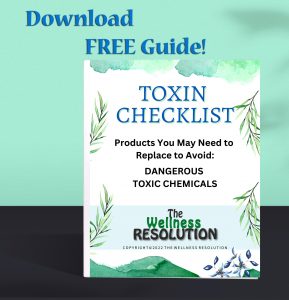
Download this Free Guide:
TOXIN CHECKLIST
(Products to Replace)
View All Blogs on Toxins
What are Toxins in the Body? (Overview of All Things Toxic)
Indoor Air Toxins & Chemical Cleaners
Air Quality Solutions and Replacing Chemical Cleaners
Toxic Products in Your Kitchen & Choosing Safe Cooking Utensils
Outdoor Toxins – What’s in your yard?
Methods to Detox Toxins Including Detoxing Naturally
Resources:
Lupkin, Sydney. (2015, April 27). abcnews/Women Put an Average of 168 Chemicals on Their Bodies Each Day, Consumer Group Says. Retrieved from: https://abcnews.go.com/Health/women-put-average-168-chemicals-bodies-day-consumer/story?id=30615324#:~:text=LOG%20IN-,Women%20Put%20an%20Average%20of%20168%20Chemicals%20on%20Their%20Bodies,advocates%20revealed%20the%20startling%20number
Lang, Fabienne. (2021, April 12). INTERESTING ENGINEERING/Deadly Engineering: A Complete History of Toxic Cosmetics. Retrieved from: https://interestingengineering.com/deadly-engineering-a-complete-history-of-toxic-cosmetics
health one family medicine/Common Skincare Ingredients that Are Linked to Cancer. Retrieved from:
https://www.healthonemedicine.com/blog/common-skincare-ingredients-that-are-linked-to-cancer#:~:text=Parabens,cancer%20and%20decreased%20sperm%20count.
EWG/Body Burden: The Pollution in Newborns.
https://www.ewg.org/research/body-burden-pollution-newborns#:~:text=In%20a%20study%20spearheaded%20by,of%202004%20in%20U.S.%20hospitals
Breast Cancer Prevention Partners/Parabens. Retrieved from: https://www.bcpp.org/resource/parabens/
FDA/FDA Authority Over Cosmetics: How Cosmetics Are Not FDA-Approved, but Are FDA-Regulated. Retrieved from: https://www.fda.gov/cosmetics/cosmetics-laws-regulations/fda-authority-over-cosmetics-how-cosmetics-are-not-fda-approved-are-fda-regulated#Who_is_responsible
Tamatum, Soumva. (2022, January 21). SKIN KRAFT/16 Toxic Chemicals To Avoid In Cosmetics And Skincare. Retrieved from:
https://skinkraft.com/blogs/articles/toxic-chemicals-in-cosmetics
Faber, Scott. (2020. May 5). ewg/The Toxic Twelve Chemicals and Contaminants in Cosmetics. Retrieved from: https://www.ewg.org/the-toxic-twelve-chemicals-and-contaminants-in-cosmetics
Pizzorno, Joseph. Institute for Natural Medicine/How Toxins Cause Disease, from Joe Pizzorno, ND & his book The Toxin Solution. Retrieved from: https://naturemed.org/how-toxins-cause-disease/
Harvard T.H. Chan/Harmful, untested chemicals rife in personal care products. Retrieved from: https://www.hsph.harvard.edu/news/features/harmful-chemicals-in-personal-care-products/
Dr. Sandison, Heather. North County Natural Medicine/HOW DO I KNOW IF I’M FULL OF TOXINS?. Retrieved from: https://www.northcountynaturalmedicine.com/know-im-full-toxins/
I have a Wellness Coach Certificate, I'm an entrepreneur, an innovator, writer, and artist. My expertise includes over 7 years of marketing, research, and developing content for holistic health businesses. Plus, my own personal journey of becoming chronically sick: understanding what went wrong, and finding a way to heal and live a healthier life. I have a passion for wellness with a wealth of knowledge surrounding: wellness, flaws in healthcare, root causes for chronic illnesses, and alternative treatments.

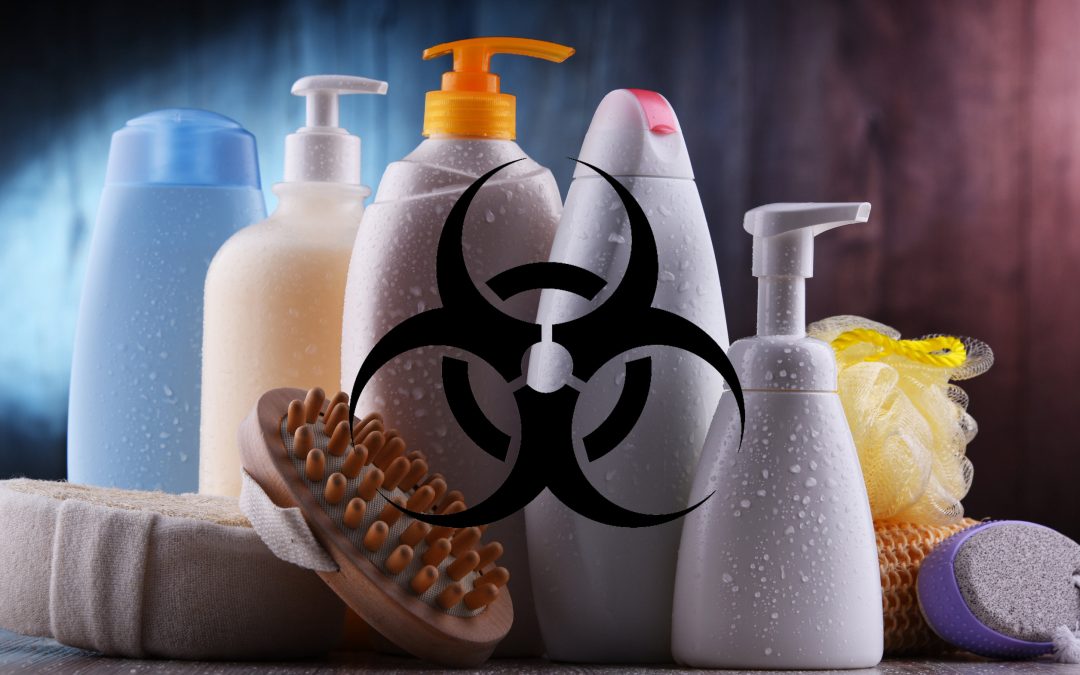

Such a great overview. Toxins seem to be in everything we use and consume these days, grateful for such an extensive overview for how to avoid them in skin care products.
I find it shocking that the FDA doesn’t regulate the cosmetic industry. We absorb what we apply to our skin so this is crucial.
And babies being born with 200-300 toxins? That’s crazy (and sad).
Thanks for sharing!